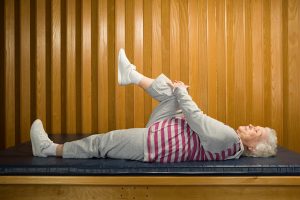
The authors of the study reviewed scientific reports on the role of muscle-stretching exercises as an add-on treatment for fibromyalgia. The study was retrospective, and the researchers collected data from different medical databases.
The analysis revealed that muscle-stretching exercises significantly improved fibromyalgia patients’ quality of life. The authors noted that no specific technique yielded greater benefits than others, meaning that any form of muscle-stretching exercises could offer benefits to fibromyalgia patients.
The authors concluded that muscle-stretching exercises should be included alongside other forms of fibromyalgia treatment.
How do stretching exercises benefit fibromyalgia?
Exercise and stretching are not only important for fibromyalgia patients, but for anyone aiming at good health. Although it may seem difficult to exercise and stretch whilst living with fibromyalgia, pushing through could yield positive results.
Stretching is a less intense form of exercise, and although it may seem so simple it can have a great impact on fibromyalgia. Stretching helps elongate muscles, releasing stiffness. It boosts flexibility thus expanding the range of motion, which can improve performance in daily activities. Stretching can be a time to relax and relieve stress, and, lastly, a nightly stretching routine can help promote better sleep – something many patients desperately need.
There are many different types of stretching that can offer different benefits.
Passive stretching: This type of stretching is done when warming up or cooling down for a workout. In this type of stretching, each stretch is held for at least 10 seconds. You are either in a standing or laying position, holding onto a body part to give it a stretch.
Isometric stretching: This type of stretching does not require motion, but rather you clench a muscle in order to stretch it. Not only does isometric stretching stretch the muscle, it can boost muscle strength as well.
Active stretching: This may be difficult for fibromyalgia patients at first, but they can work up to it over time. In this type of stretching, the body part is being stretched without the use of hands and arms to hold it in place.
Dynamic stretching: Dynamic stretching occurs when you move the body slowly in order to push your joints to a full range of motion. Take your time with dynamic stretching and don’t push yourself beyond the point where it stops feeling comfortable.
Here are some tips to perform proper stretching:
- Warm up prior to stretching – take a warm shower or walk around the house.
- Never hold a stretch to the point of pain.
- Focus on your breathing while stretching.
- Start a stretching routine slowly and build yourself up over time.
- If muscle are sore repeat that specific stretch a few times or hold the stretch for shorter amounts of time.
- If you are particularly stiff, try stretching in warm water
- If you cannot hold a stretch on your own, use assistance – either with a wall, a chair, or even with a friend.
- Try a stretching class like yoga to help guide you into a regular stretching routine.
By following these tips you can help implement everyday stretching into your life to boost quality and improve function.
Related Reading:
Fibromyalgia pain associated with cytokines and oxidized LDL levels
Fibromyalgia pain is associated with cytokines and oxidized LDL levels. The study looked at 48 patients with fibromyalgia and 43 healthy women. Researchers assessed the participants’ functional status, severity of the symptoms, and the number of tender points using the Fibromyalgia Impact Questionnaire (FIQ). Continue reading…
Fibromyalgia alters brain signals, raises hyperalgesia risk, and lowers opioid therapy effectiveness
Fibromyalgia alters brain signals, raises hyperalgesia risk, and lowers opioid therapy effectiveness. Hyperalgesia is an increased pain sensitivity, and the researchers noted that these changes in the brain signals may contribute to pain experienced in fibromyalgia and the lack of response to opioid therapy. Continue reading…
Sources:
http://www.sciencedirect.com/science/article/pii/S2255502114002089
http://fibromyalgianewstoday.com/2015/03/17/muscle-stretching-benefits-health-in-fibromyalgia-patients/
http://www.fibromyalgia-symptoms.org/fibromyalgia_stretching.html